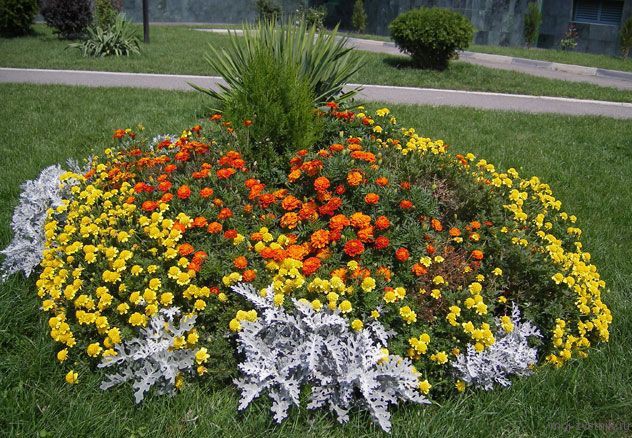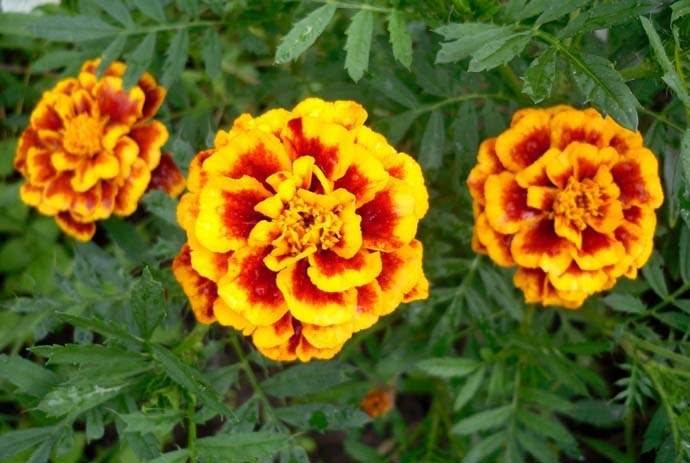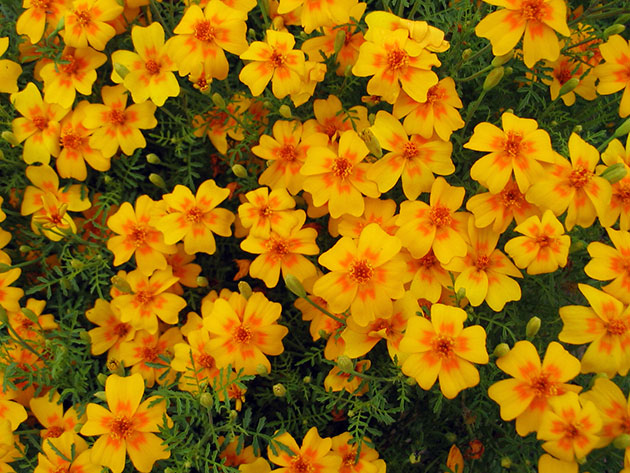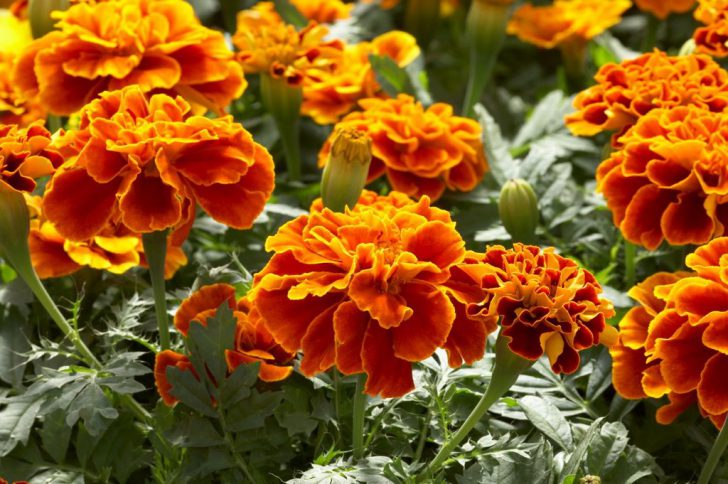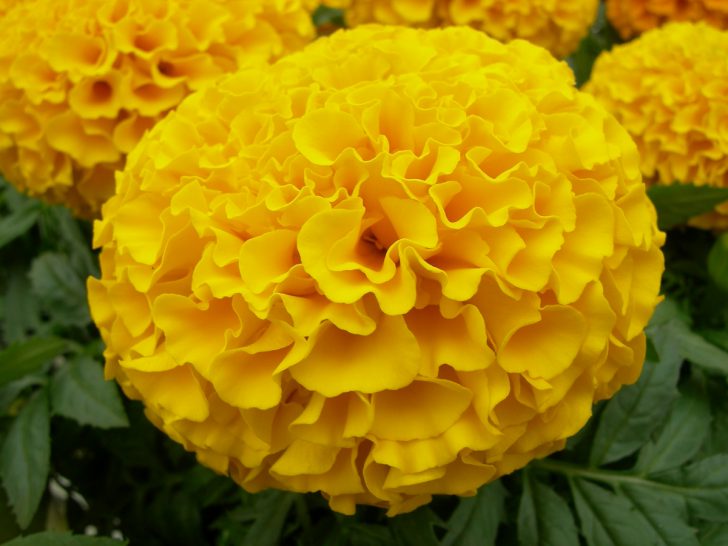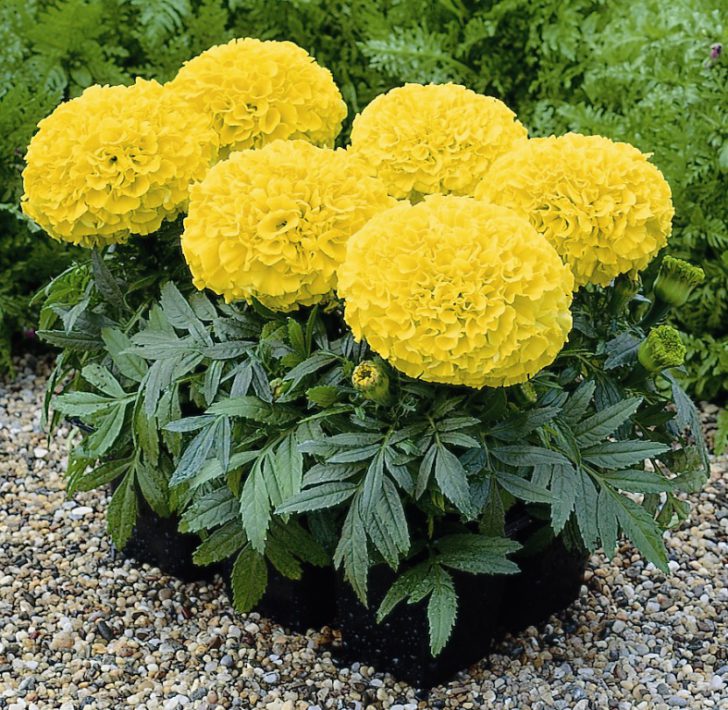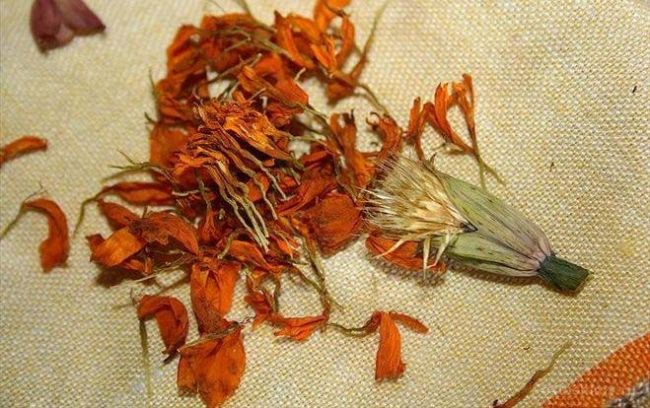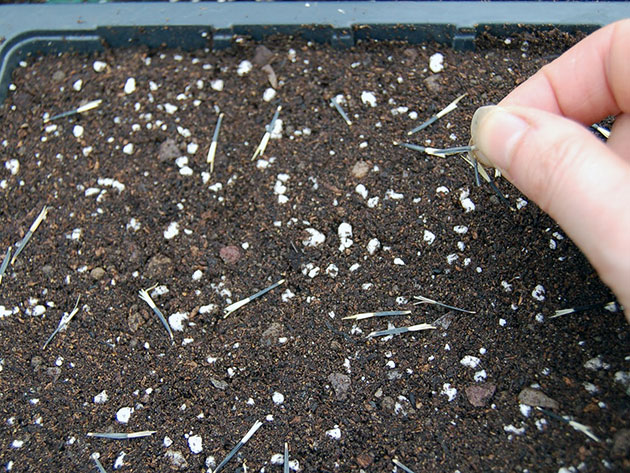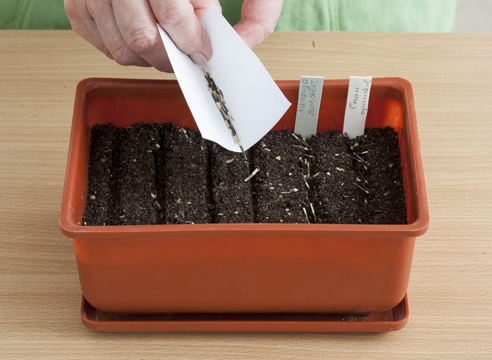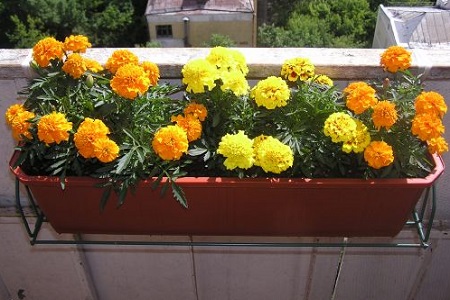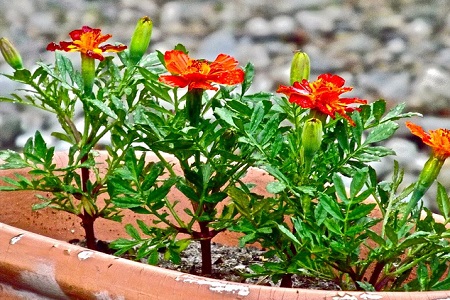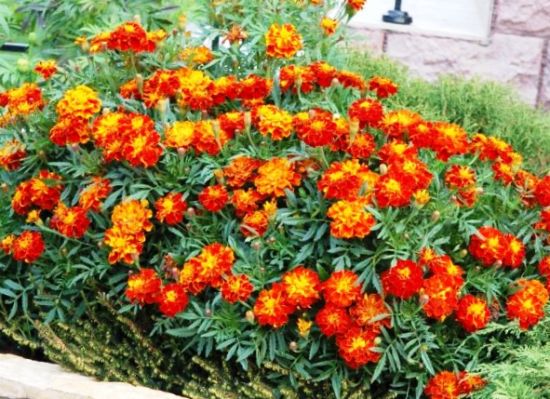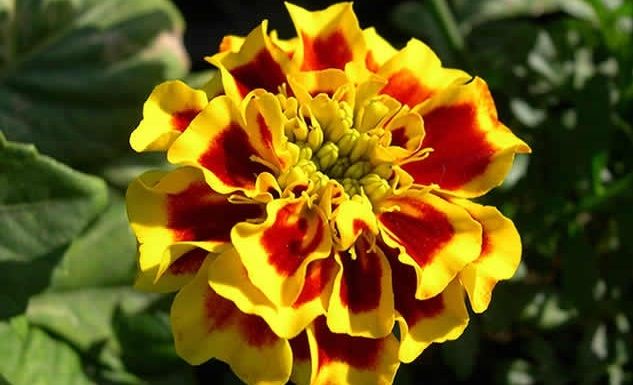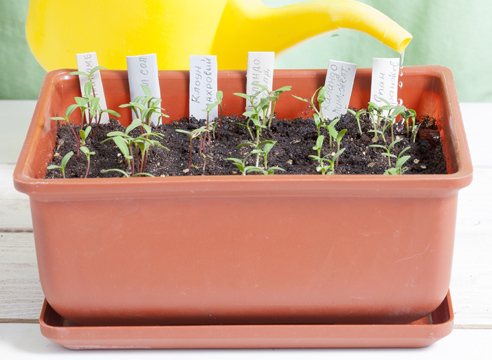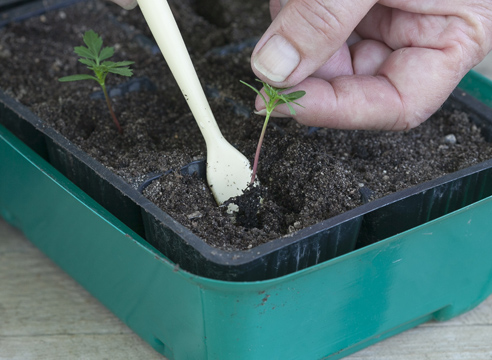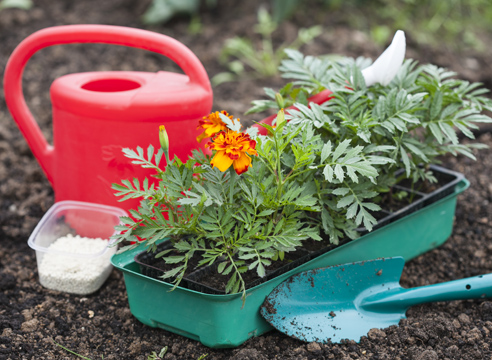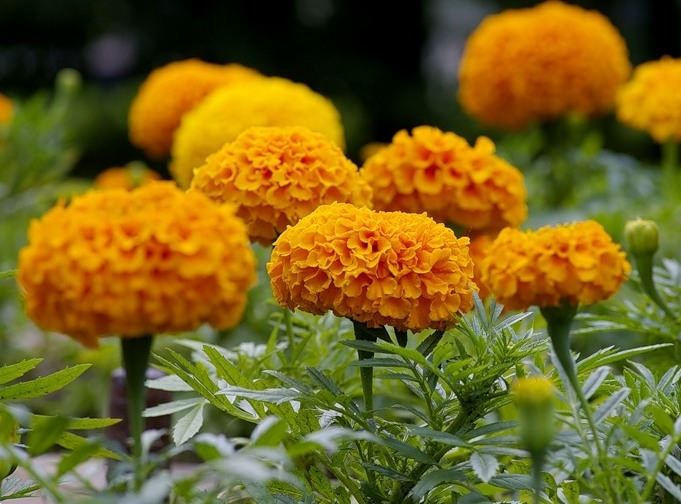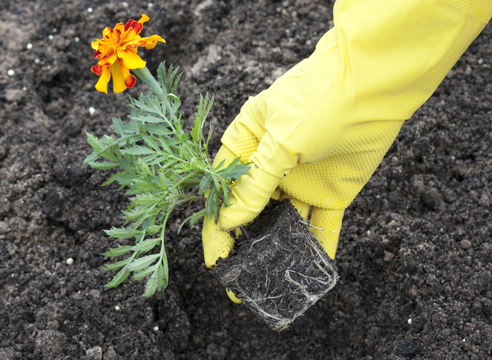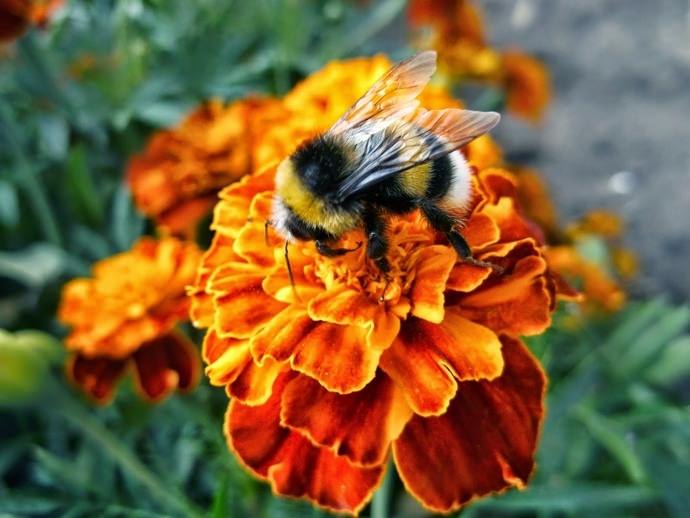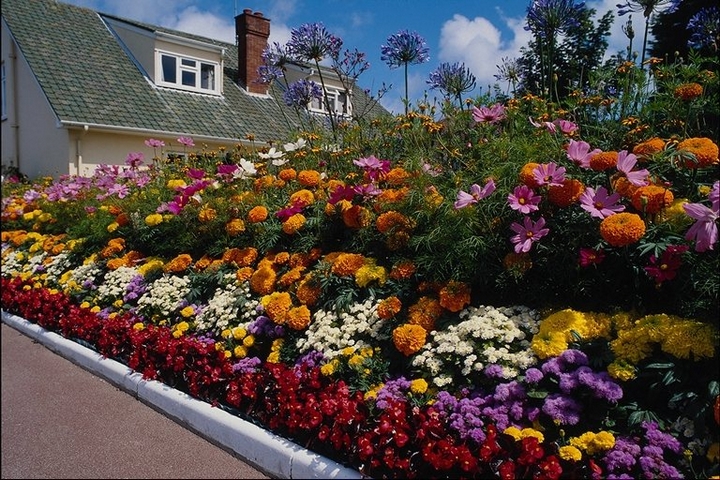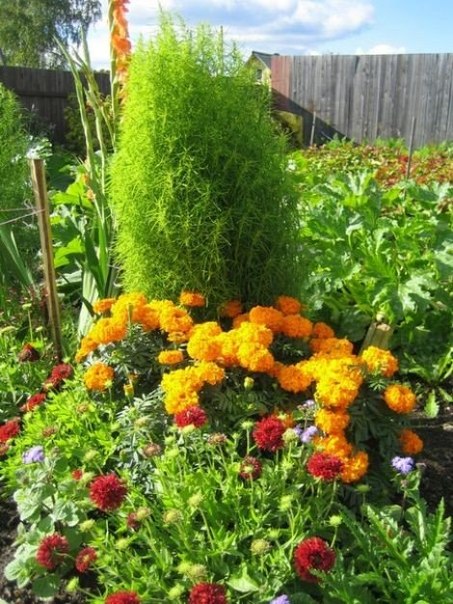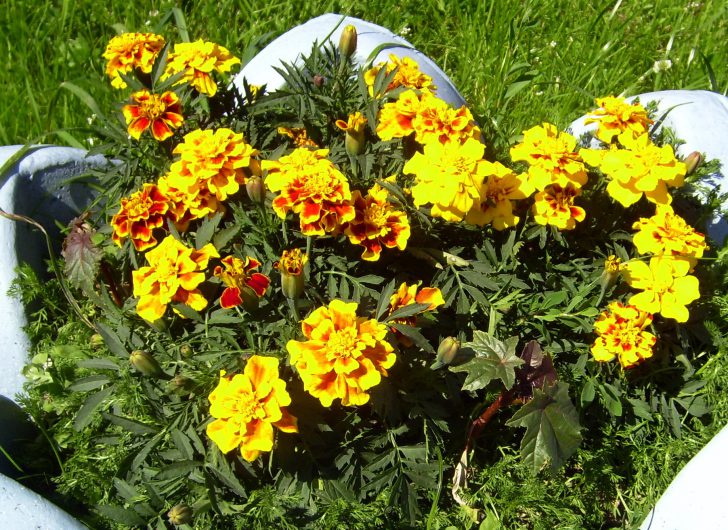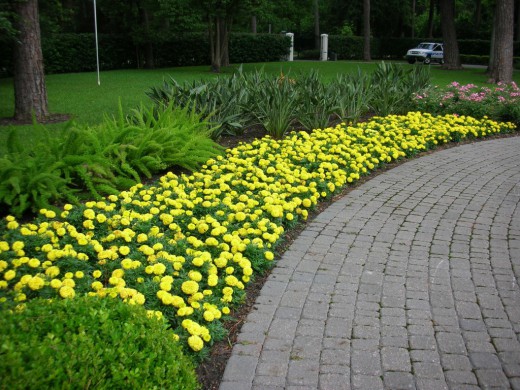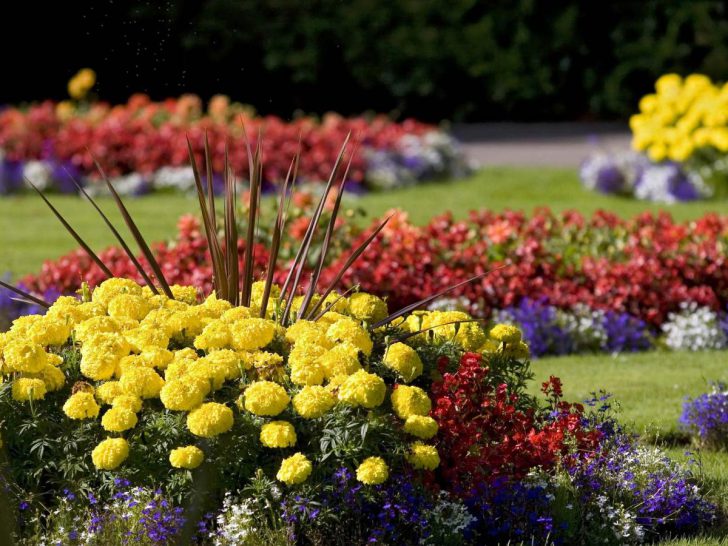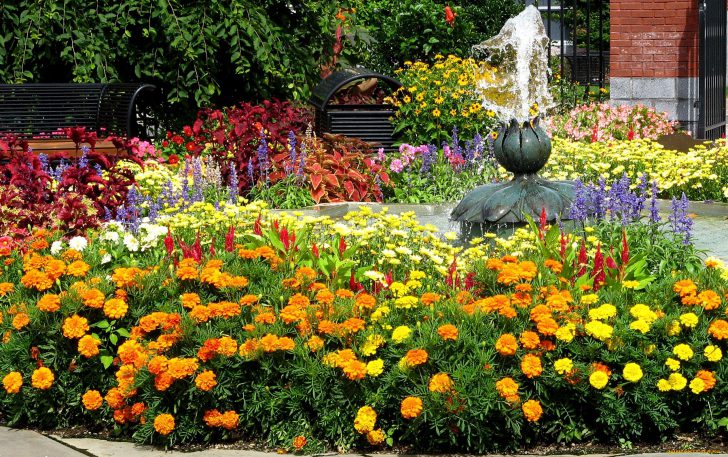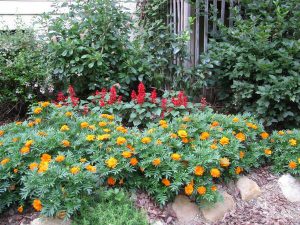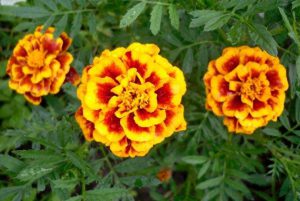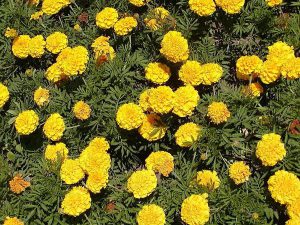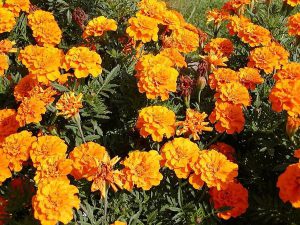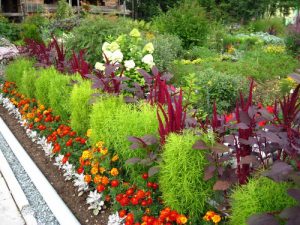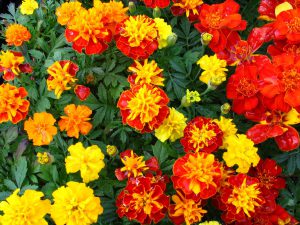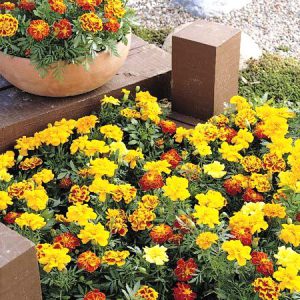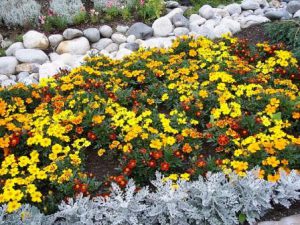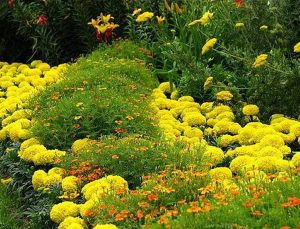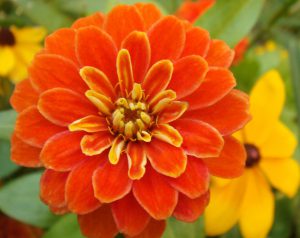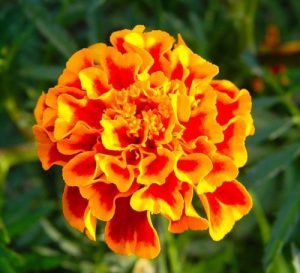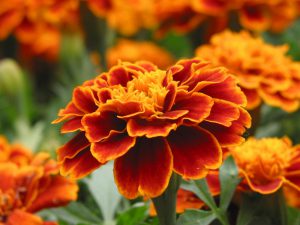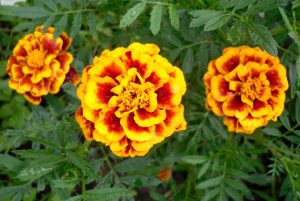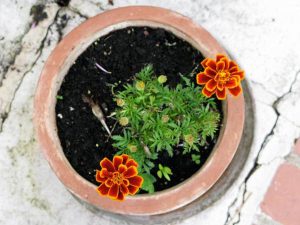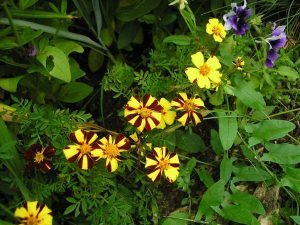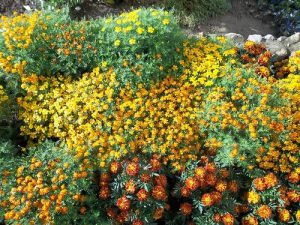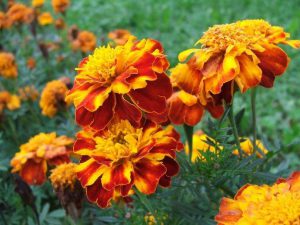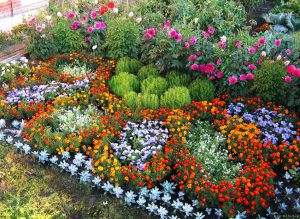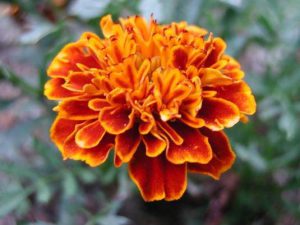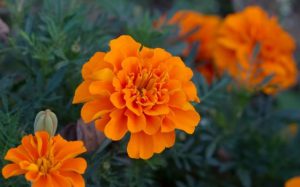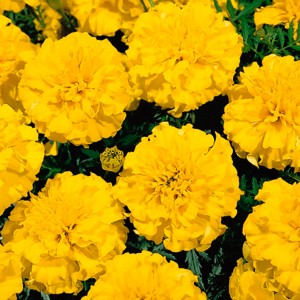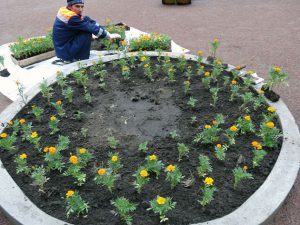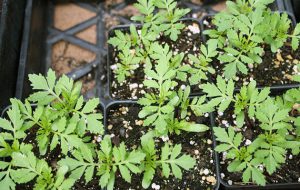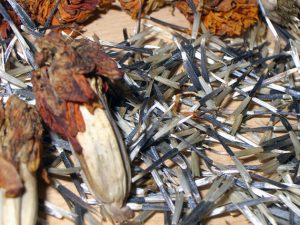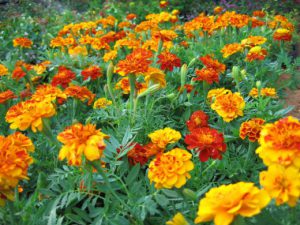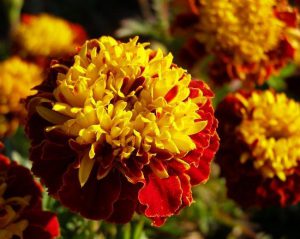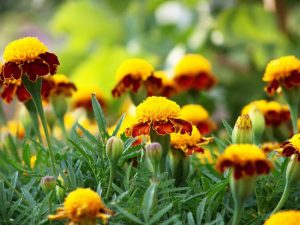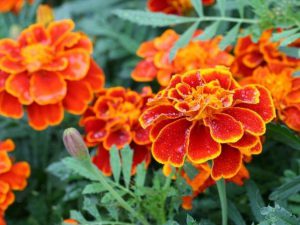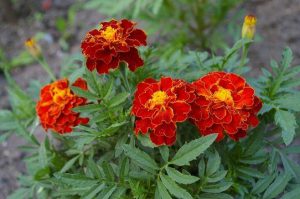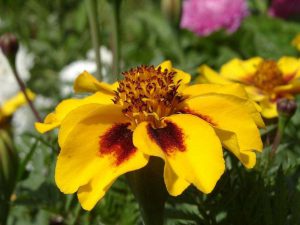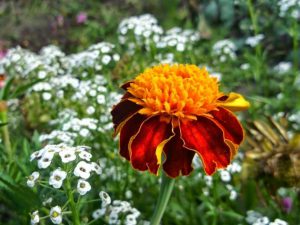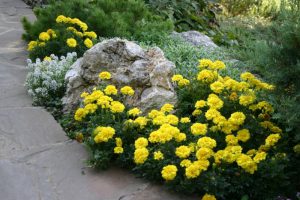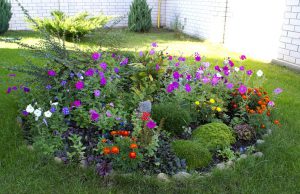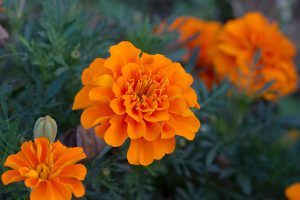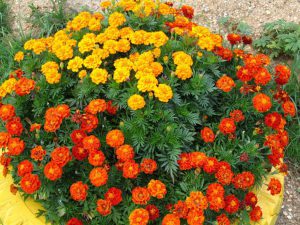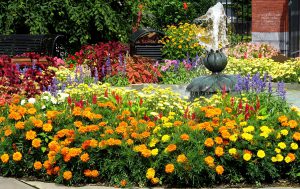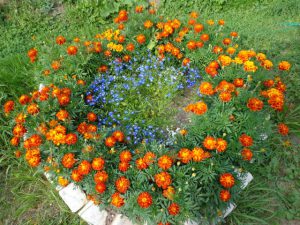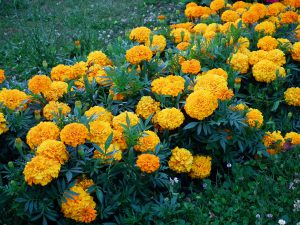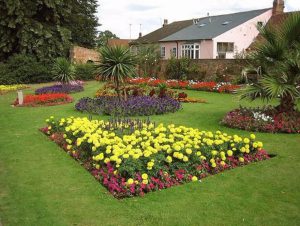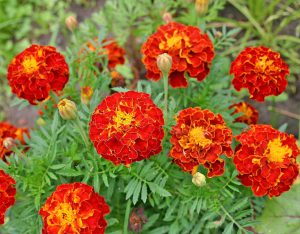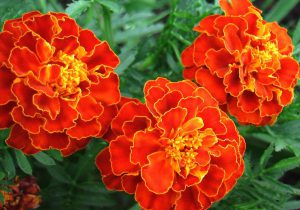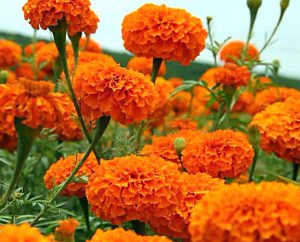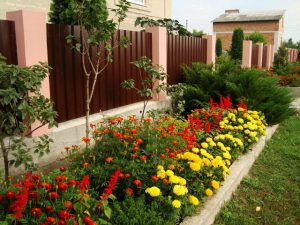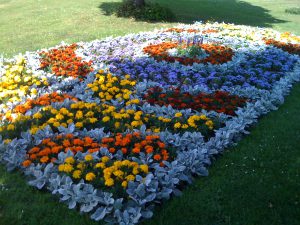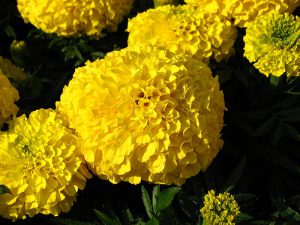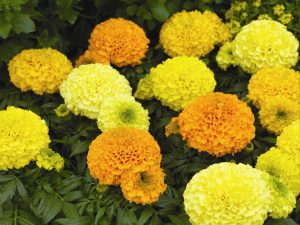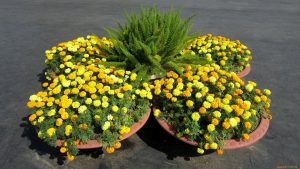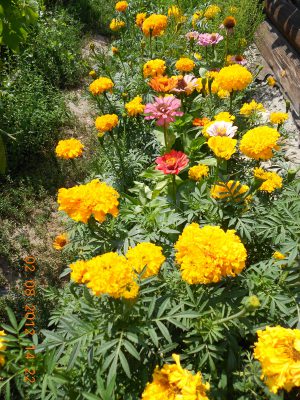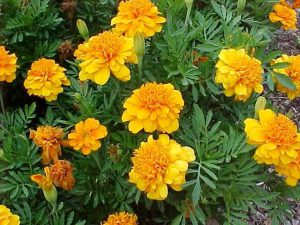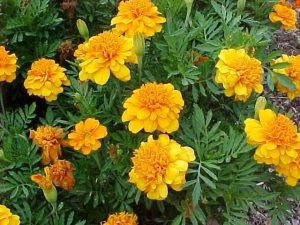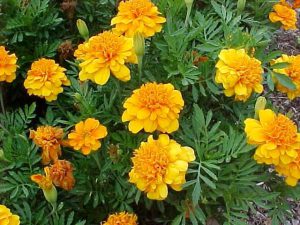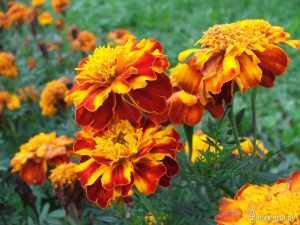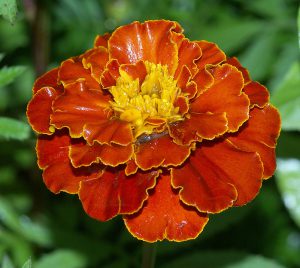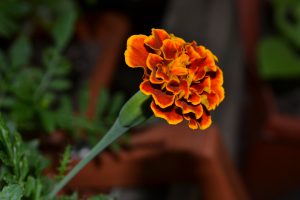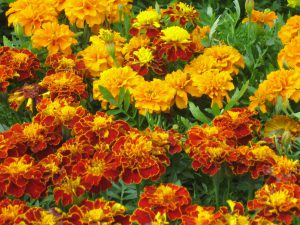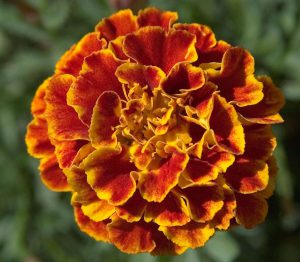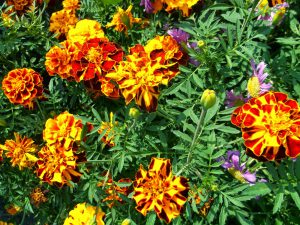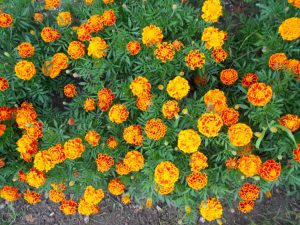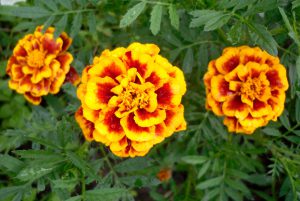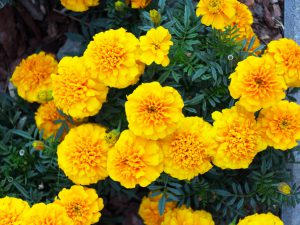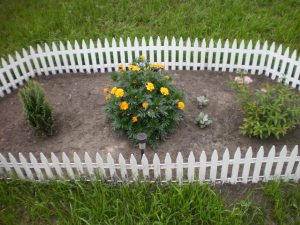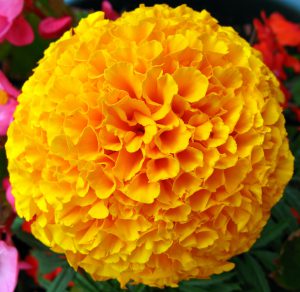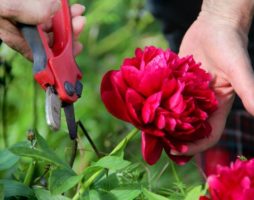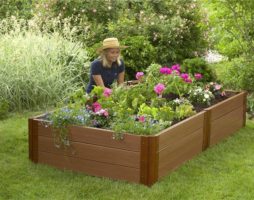In order to make the territory of a summer cottage attractive or to revive the exterior of a city balcony, you do not need to be a professional gardener. Exotics in the flower beds can be quite successfully replaced with a carpet of marigolds. These cute flowers can be bred even by those who have never planted a seed in the ground, they are so unpretentious. They do not need specific soil and regular watering. With their non-capricious nature, marigolds manage to demonstrate the highest decorative qualities, and this for flowers, you see, is more an exception than a rule. Breeders did a great job and today, instead of several natural species, plants are presented in an amazing variety of varieties. You can easily find options suitable for color, height, size of the bowl of flowers, and you can embody any landscape compositions that your imagination has drawn for you.
But do not rush to just throw marigold seeds into the ground! For everything to really grow and grow, one “light hand” is not enough. Of course, you can rely on chance, but still, knowledge about some aspects of growing these representatives of the flower world will never be superfluous.
Description of the species
Marigolds are representatives of annual plants. They have a fairly powerful, as for a flower, root system and a branched aerial part. Sepals are distinguished by a variety of shades. In addition to pure yellow or red petals, flower bowls can combine a luxurious hue mix. The absence of the need to create special living conditions and exhausting care make marigolds a priority plant in the design of suburban areas.
back to index ↑Varieties of marigolds
There are three main types of marigolds:
- Thin-leaved.
- Rejected.
- Upright.
Marigolds thin-leaved
These are representatives of the compact category of the species. Their height ranges from 20-40 cm. The foliage of the variety is small, but gracefully indented and very dense. The flowers are small, with a bowl diameter of up to 2 cm, but with a variety of colors in the yellow-red spectrum. There are options with two-color petals. The view is ideal for decorating borders and is often found in mixed plantings. Thin-leaved marigolds bloom extremely abundantly, but the beginning of the flowering period is somewhat shifted, which makes it possible to classify them as late-flowering.
Marigolds rejected
The most actively and rapidly flowering variety. On a bush there can be up to a hundred buds, the color of which can vary in the yellow-brown spectrum. The flowers are large 4-6 cm in diameter. The plant bushes well. Growth indicators 20-60cm.
This variety is extremely viable, however, incredibly thermophilic, so the very first frost will destroy it.
The smallest representatives of rejected marigolds are planted on hills and as a border.
Marigolds erect
The most powerful representatives of the species, capable of reaching a meter height and blooming with simple or terry baskets, up to 12 cm in diameter. Their color spectrum:
- Orange.
- Yellow.
- Light brown.
Upright marigolds bloom at the end of June. The flowering period extends until late autumn. A pleasant mild aroma makes this marigold variety suitable for cutting.
Primary residence:
- Flowerbeds.
- Rabatki.
- Mixborders.
Sow in the ground or grow marigold seedlings?
You can sow seeds in several periods:
- In March, sending the seeds to a box on the home windowsill.
- In the first days of May, having equipped a film greenhouse for seedlings.
- In the last days of May, immediately into the ground.
In principle, marigolds are fast vegetating plants, which allows them to begin flowering within a month and a half from the moment of sowing. Their unpretentiousness and relative cold resistance do not prevent the sowing of seeds directly into open ground, in the planned place of growth. However, the insidiousness of our climate often plays a cruel joke, returning frosts in late spring. So, it is better not to take risks and prepare flower seedlings. If you want to grow several varietal varieties of marigolds at once, including upright specimens, then sow the seeds of the latter as early as possible, in early March. Low-growing species can be sown closer to the middle of spring.
back to index ↑Where to get seeds?
If you first decided to decorate your country landscape with these magnificent flowers, then you will have to go to the store for seeds or look for interesting offers on the Internet. You can, of course, “get hold of” them from one of the neighbors, but then you will have to forget about the varietal diversity and the play of colors. By spending once and purchasing the marigold seeds of the species that suit you, you will win twice:
- Get a beautiful site design.
- You will have your own seeds for next season.
How to get strong seedlings?
The process is not particularly time-consuming and will not tire you. If space permits, then plant the seeds in individual cups. This will save you from the subsequent picking of the grown shoots. In other cases, marigolds are sown in bowls or boxes, and subsequently, germinated seedlings are moved to separate pots.
planting soil
“The soil must be disinfected”
In order for the seeds to feel comfortable, an earth mixture is prepared for them, which should be mixed in equal proportions:
- Forest land.
- Peat.
- Humus.
- Sand.
The proportions of the components can be slightly changed, the main thing is that the result is a light, moisture-intensive and nutritious substrate. There is no desire and time to mess with the preparation of the soil mixture - go to the store. There are always ready-made offers.
The soil must be disinfected before use, and it does not matter whether you bought it in a package or prepared it yourself. The easiest way to do this is to leave the soil to freeze for a couple of weeks on the balcony. You can cultivate the land by watering it with a fungicidal solution or a strong solution of potassium permanganate.
sowing stage
A variant of sowing marigolds with subsequent picking
Putting change in plastic containers is quite convenient. Drainage holes are made in the bottom of the container and then it is filled with moistened soil by about 1 cm. The surface of the soil mixture is leveled and seeds are scattered over it. Don't forget the drainage layer.In its quality in this case, ordinary sand can act.
Flowers such as marigolds have excellent germination, so do not try to sow the earth thicker. The seeds are hidden under the next centimeter (no more!) Layer of soil, after which the surface of the last one is moistened with a spraying method. The container is covered with a lid, a piece of glass or a film and sent to a warm place.
Sprouts will hatch in 2-4 days. In the case of old seeds or hard-growing varieties, the process can take up to 8 days.
The emergence of seedlings is a signal to remove the film and move the containers to a cooler place. This will slow down the growth of seedlings and prevent them from stretching into thin blades of grass.
Marigold sprouts show miracles of durability, so you don’t have to worry about organizing a stable microclimate for them in terms of humidity. They will not fall or dry out if they are not watered in time. The sprouts will need the first fertilizers 14 days after transplanting, picking or planting, that is, by the time the nutrient resources of the soil mixture are exhausted.
Marigold picking time
You can dive marigolds from the moment the first pair of real, characteristic for this variety, carved leaves appear on them. When picking, the stems are dug into the ground to the cotyledons. In this way, the height of the weak stem is reduced and the root system is formed powerful and strong (additional root shoots will also appear on the dug part of the stem).
The picking process stimulates the active growth of the flower, which is a consequence of the increase in "personal" land space. Seedlings will be ready for planting in balcony containers or in a flower bed in 21 days.
The option of planting seeds without a pick
Picking is not required if the seeds are planted with a step distance of 6 cm. The guarantor of avoiding picking marigolds will be planting them in personal palettes. Before planting, the seeds can be soaked and wait for them to "awaken". As soon as the sprouts hatch, the seed is immediately transferred to the ground.
An "incubator" for seeds is prepared from a damp cloth, which is placed on a saucer. Seeds are scattered over it and covered with a film. The planting process begins on the second day. Cups are prepared for planting in the same way as large containers.
The nuances of seedling care
Among the unpretentious marigolds, one species can still be distinguished, which will require some attention to its content. This is a thin-leaved variety. And, nevertheless, marigolds of all varieties will be equally happy with the right temperature regime and adequate watering.
Lighting
Seedlings are transferred to a well-lit window sill with the appearance of the first sprouts.
Temperature
Seeds should be germinated at 25C. The emergence of seedlings requires changing the conditions for the location of plants, sharply lowering the temperature by 5-7C.
Watering seedlings
The sown soil is moistened regularly. This is done by spraying its surface, and not by pouring from a watering can. Ascended seedlings, on the contrary, should be watered under the root, but try not to overmoisten the soil. The watering interval will be determined by the rate of drying of its surface.
back to index ↑We plant marigolds in the ground
“Very often, gardeners sow marigold seeds immediately in the country soil”
It is only necessary to transfer seedlings to a flower bed in very late spring, when the threat of night frost has passed. Transplanted seedlings must have a strengthened root system and at least three, clearly formed leaves on the stem.Ideal for the existence of marigolds will be loamy, highly fertile soil with good moisture. If the quality of the composition of the earth leaves much to be desired, then you will have to replenish the depleted reserves of minerals and nutrients with additional feeding. During the growing season of plants, it will have to be carried out several times.
The step distance when planting marigolds in the ground is determined in accordance with their type and variety. Representatives of the upright class should be separated from each other by at least 40 cm. Medium-sized marigolds are planted at intervals of 20 cm, and dwarf species no further than 10-15 cm away.
Very often, gardeners do not bother with growing seedlings, but sow the seeds of marigolds immediately in the country soil. This is usually done in early May. The landing site is hidden under the film. By the end of the month, the site will have strong and strong plants that can be moved anywhere.
Marigolds can be transplanted at any time in their life. They calmly react to this process and easily restore even a heavily damaged root system.
back to index ↑The subtleties of caring for marigolds
Caring for marigolds is a real pleasure, because the plants respond incredibly gratefully to every bit of your attention, rewarding the minimal effort that you spend on cultivating their life with rapid flowering.
- In principle, marigolds will feel good in a plot of any light intensity, but the most beautiful bushes will still be in a sunny area. It will be good for them on the western, southern and even eastern balconies. On the north side and in dense shade, their flowering will be noticeably weaker and may stop ahead of schedule by September.
- It is important to properly organize the irrigation regime. Marigolds can be "watered" regularly and even plentifully, on hot days and twice a day. If this is not done, a disaster will not happen, because the plants are more than drought-resistant, but their aesthetic appearance will noticeably suffer. The lower leaves will lose color and dry out.
Abundant watering is carried out only until flowering has begun. After the appearance of buds, the amount of moisture supplied is significantly reduced. Overflow will lead to stagnation of water and provoke the development of putrefactive processes in the roots and stem, which will end very sadly.
- The roots of flowers do not mind "breathe", which makes it necessary to loosen the top layer of soil above them, approximately once every 7 days. You can do this with any convenient tool: a small spatula, a cultivator or just a stick. Loosening will help improve the appearance of marigolds in general and will spur on active flowering.
– Marigolds do not require top dressing, but if they receive it or fertilizer, they will not fail to respond positively to your care.. If you decide to feed your flowers, then do it in three stages. The first time the plants are fertilized when they reach ten centimeter growth. This is repeated during the appearance of buds. The end of the cycle falls on the beginning of flowering.
Basically, the issue of additional fertilizer arises for marigolds growing in closed ground conditions. The earth in containers and pots is depleted very quickly, which can cause the flowering to stop, so it is better to prevent the situation than to look for a way out later.
- Marigolds are pruned. This is done:
- if the bush is too bulky;
- if the bush needs to be given a special shape;
- if flowering has declined, which happens in the middle of summer.
Pruning will renew the plants and activate the desire to bloom.
- If you want your marigolds to bloom wildly without interruption, then give them a few minutes a day to remove faded inflorescences. Why do you need to do this? The problem is that a seed box will appear in place of withered buds, and seed ripening will require large resources from the plant, thus, there will be a redistribution of forces and the number of flowers will noticeably decrease.
- The only situation when marigolds will need to be painstakingly looked after may arise in a too rainy summer. Excessive dampness stimulates the reproduction of snails and slugs, which will gladly draw juices from fragrant flowers. You can scare off pests with the smell of bleach, jars with which you will need to arrange in the flower garden and do not forget to regularly change their contents. Frequent loosening of the flower beds will also be required so that the root system of the marigolds growing there is well ventilated.

marigolds are not only beautiful, but also fragrant, therefore, flowers cut from a flower bed will decorate your home
Pest protection
Marigold plantings can suffer not only from slugs attacks, but also from gray rot. The latter can deprive you of a luxurious discount in a matter of days. The fight against this disease should be carried out only by radical methods. All affected bushes are subject to immediate uprooting, followed by destruction in a fire. Do not be lazy to burn diseased specimens. If you simply throw them into the compost heap, then there will be a danger of the infection spreading to other garden plots, and you will lose not only flower beds, but also the crop.
With the advent of the summer drought, marigolds in the flowerbed have a new enemy - the spider mite. Regular spraying of plants with water will help prevent infection, which will help regulate humidity in the microclimatic conditions of the flower bed. If the moment is missed, and the parasite has already spread its web in the foliage of flowers, spray the planting with an infusion of yarrow, onion and hot pepper.
back to index ↑Marigolds are not just flowers
Few people know that marigolds in the garden have not only a decorative mission. This flower, with its peculiar smell, can repel a variety of garden pests. In addition, the phytoncides produced by the plant contribute to the disinfection of the soil adjacent to the bush. This should be an occasion to plant marigolds not only in the areas allotted for flower beds, but also between vegetable beds, as well as to plant strawberry plantations with them.
back to index ↑Conclusion
As you can see, nothing supernatural in growing marigolds, however, as in caring for them, does not need to be done. Add here their aesthetics, with practical benefits, and you will understand that you really cannot find a more successful option for decorating the landscape design of a suburban area.
Photo gallery - marigolds:
- marigold
- OLYMPUS DIGITAL CAMERA
- ????????????????????????????????????
- SONY DSC
Video
